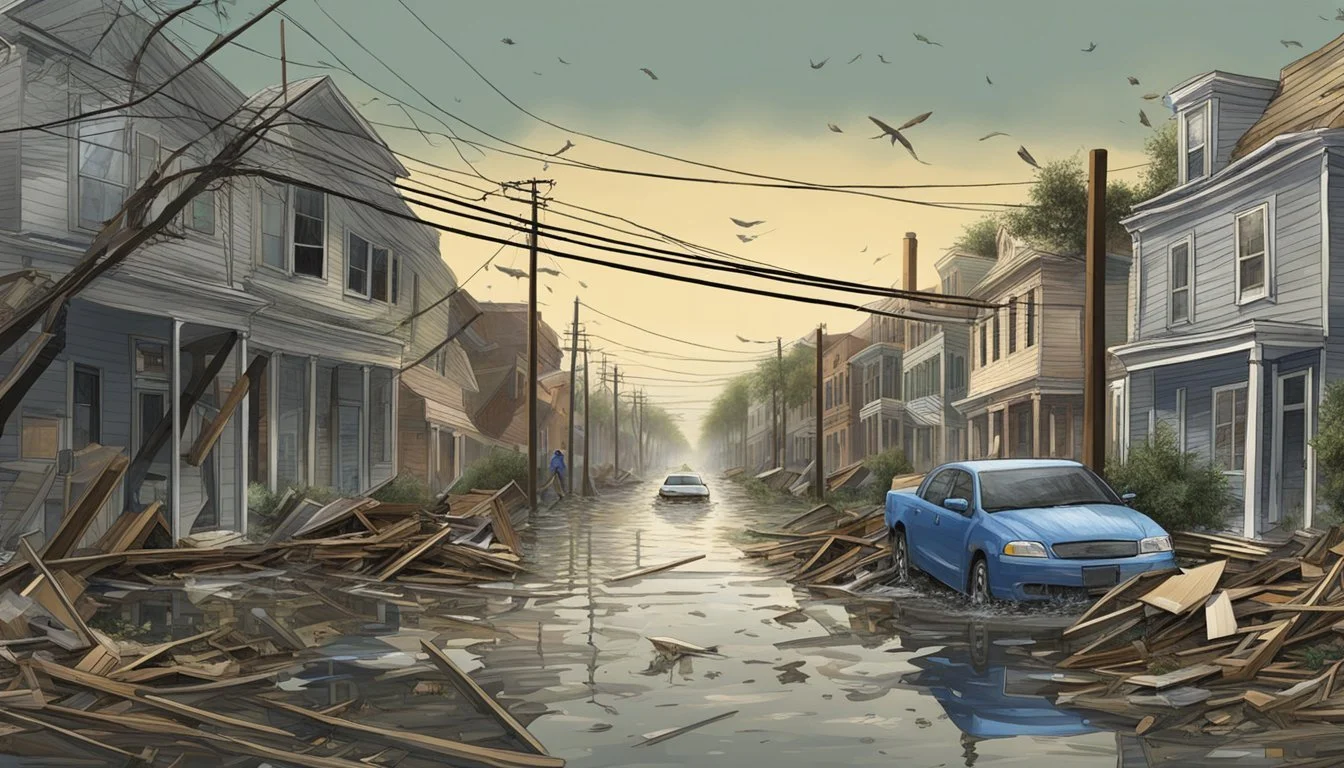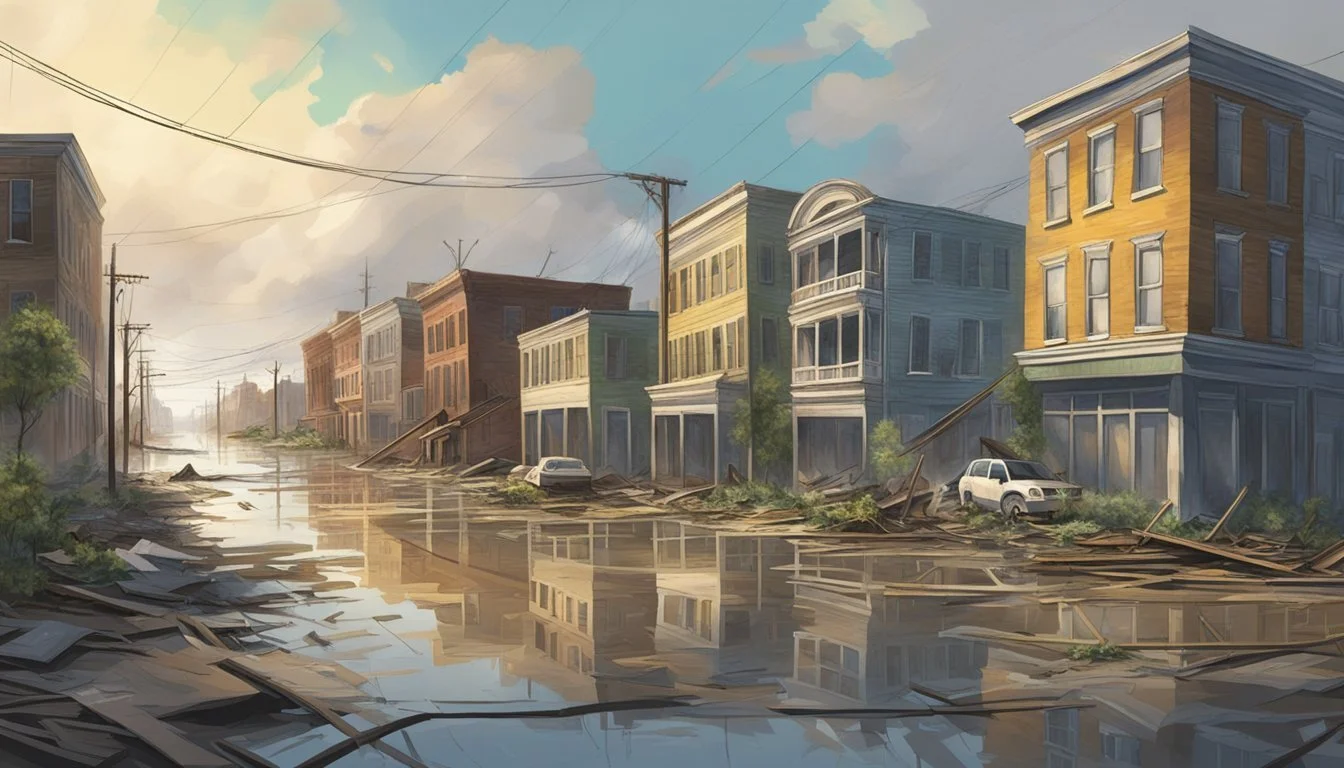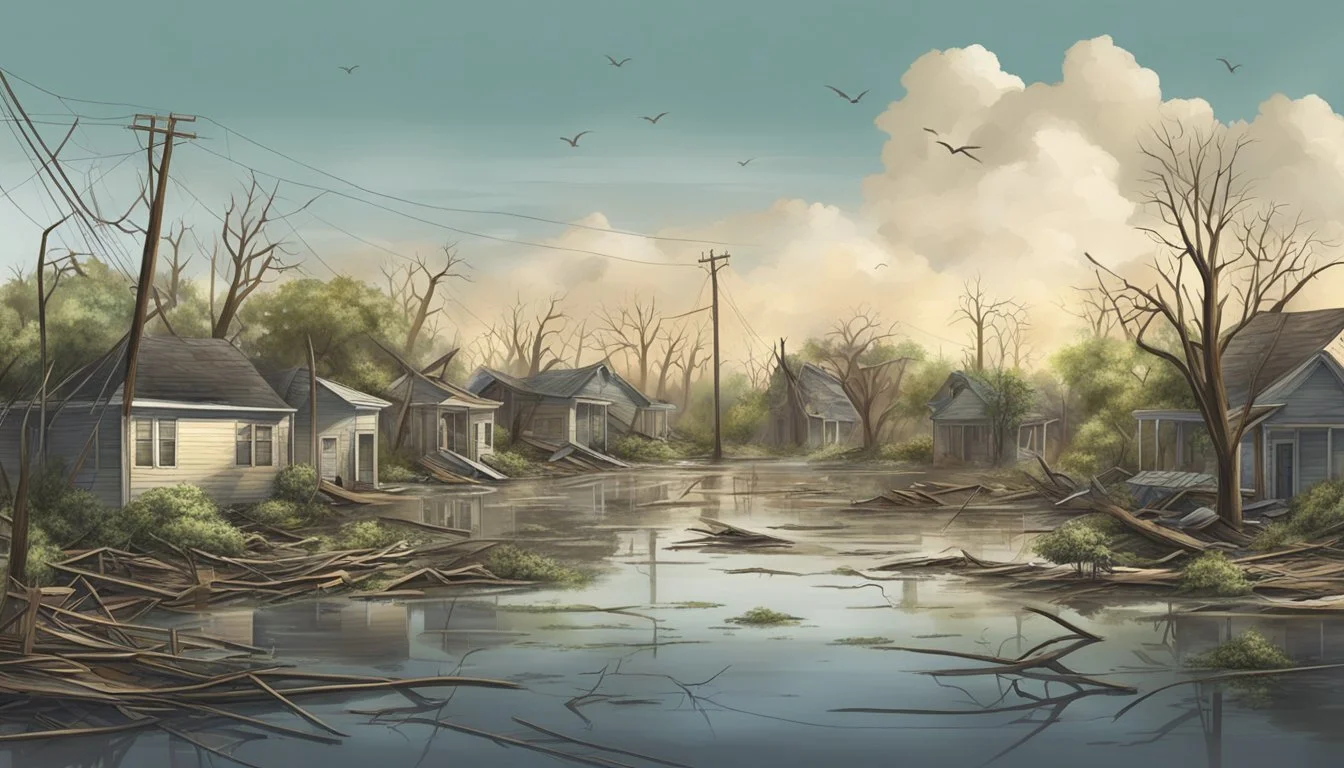Katrina's Fury Unleashed: The Storm That Shattered America's Soul
Hurricane Katrina, one of the most devastating natural disasters in U.S. history, struck the Gulf Coast in August 2005. The storm's impact was particularly severe in New Orleans, where levee failures led to catastrophic flooding. In the years since, numerous documentaries have chronicled the hurricane's destruction and its long-lasting effects on the region.
These documentaries offer viewers a powerful glimpse into the human stories behind the disaster, showcasing both the tragedy and resilience of those affected. Films like "Trouble the Water" and "Inside Hurricane Katrina" provide firsthand accounts of survival and the immediate aftermath of the storm. Others explore the political and social ramifications, examining issues of race, poverty, and governmental response.
Documentaries about Hurricane Katrina serve as important historical records and tools for understanding the complex factors that contributed to the disaster's severity. They highlight the voices of survivors, rescue workers, and community leaders, providing a multifaceted view of the event and its ongoing impact on New Orleans and the Gulf Coast region.
Origins and Impact of Hurricane Katrina
Hurricane Katrina emerged as one of the most devastating natural disasters in U.S. history, causing widespread destruction along the Gulf Coast. The storm's development, path, and catastrophic effects reshaped the physical and social landscape of the region.
Meteorological Overview of the Storm
Hurricane Katrina began as a tropical depression on August 23, 2005, over the Bahamas. It rapidly intensified, reaching Category 5 status on August 28 with winds of 175 mph. The storm's massive size, spanning 400 miles, contributed to its destructive power.
Katrina's warm core and low central pressure created an unusually high storm surge. This surge reached up to 28 feet in some coastal areas, overwhelming defenses and inundating vast swaths of land.
Initial Landfall and Path
Katrina made its first U.S. landfall in Florida on August 25 as a Category 1 hurricane. It then entered the Gulf of Mexico, strengthening over warm waters. The storm's second and most destructive landfall occurred on August 29 near Buras-Triumph, Louisiana.
Wind speeds at this point reached 125 mph, classifying Katrina as a strong Category 3 hurricane. The storm's path took it through southeastern Louisiana, southern Mississippi, and parts of Alabama.
New Orleans and the Levee Failures
New Orleans faced catastrophic flooding when its levee system failed. Over 50 breaches occurred in the flood protection structures, submerging 80% of the city. The 17th Street Canal levee was among the most significant failures.
Water from Lake Pontchartrain poured into residential areas, trapping thousands. The Lower Ninth Ward suffered severe damage when floodwalls along the Industrial Canal collapsed. These failures exposed critical weaknesses in the city's flood defenses, leading to long-term debates about infrastructure and urban planning.
Documentaries on Katrina
Hurricane Katrina's devastating impact inspired numerous filmmakers to document its aftermath. These productions offer unique perspectives on the disaster, government response, and long-term consequences for New Orleans and the Gulf Coast.
Notable Documentaries Overview
"Inside Hurricane Katrina" provides a comprehensive look at the storm's destruction. Narrated by Forest Whitaker, it explores the hurricane's immediate impact and subsequent challenges. National Geographic's offerings delve into the science behind the disaster and its environmental repercussions.
"The Storm" examines the failures in disaster preparedness and emergency response. It highlights systemic issues that exacerbated Katrina's toll on vulnerable communities.
"Trouble the Water" offers a personal account of survival during and after the hurricane. This documentary gained critical acclaim for its raw, firsthand footage of the storm and its aftermath.
Spike Lee's 'When the Levees Broke'
Spike Lee's four-part documentary series "When the Levees Broke: A Requiem in Four Acts" stands as a landmark work on Hurricane Katrina. Lee interviewed a wide range of people affected by the disaster, from residents to politicians and engineers.
The series explores:
The immediate impact of the hurricane
Levee failures and flooding
Evacuation challenges
Government response criticism
Long-term displacement of residents
Lee's follow-up, "If God Is Willing and da Creek Don't Rise," revisited New Orleans five years later. It examined ongoing recovery efforts and new challenges facing the city.
HBO Productions and 'The Cost of Climate Change'
HBO produced several documentaries on Katrina and its aftermath. "The Big Uneasy" investigates the engineering failures that led to New Orleans' flooding. It challenges official narratives about the disaster's causes.
"Katrina Babies" focuses on the hurricane's impact on children. It explores the long-term psychological effects on those who experienced the disaster as youth.
HBO's climate change series "Too Hot to Handle" includes segments on Katrina. These episodes link the hurricane's intensity to global warming and discuss future risks for coastal cities.
Frontline Documentaries and Investigative Reporting
PBS's Frontline series produced multiple in-depth reports on Hurricane Katrina. "The Storm" examines the disaster response failures at local, state, and federal levels. It features interviews with key decision-makers and firsthand accounts from those on the ground.
"Law & Disorder" investigates controversial police shootings in Katrina's chaotic aftermath. The documentary raises questions about law enforcement practices during crisis situations.
Frontline's "The Old Man and the Storm" follows one family's struggle to rebuild after Katrina. It highlights the personal challenges faced by New Orleans residents in the years following the disaster.
Immediate Aftermath and Response
Hurricane Katrina's devastation triggered a complex emergency response involving multiple agencies and levels of government. The aftermath revealed critical gaps in disaster preparedness and highlighted the challenges of coordinating large-scale relief efforts.
The Role of FEMA
The Federal Emergency Management Agency (FEMA) faced intense criticism for its slow and inadequate response to Hurricane Katrina. FEMA's director at the time, Michael Brown, was widely perceived as unprepared for the scale of the disaster.
Key issues included:
Delayed deployment of resources
Insufficient coordination with state and local authorities
Lack of situational awareness
FEMA's struggles highlighted the need for improved disaster response planning and execution at the federal level. The agency's shortcomings led to significant reforms in subsequent years.
Local and Federal Government Actions
Local and federal government responses to Hurricane Katrina were marked by confusion and communication breakdowns. New Orleans Mayor Ray Nagin ordered a mandatory evacuation, but many residents lacked the means to leave.
At the federal level, President George W. Bush declared a state of emergency for affected areas. However, the full scope of the disaster was not immediately apparent.
Key government actions included:
Mobilization of National Guard troops
Establishment of emergency shelters
Requests for international aid
The crisis exposed weaknesses in intergovernmental coordination and emergency management protocols.
Medical Emergencies and Healthcare Crises
Hurricane Katrina created widespread medical emergencies and overwhelmed healthcare systems. Hospitals and nursing homes faced power outages, flooding, and shortages of essential supplies.
Critical issues included:
Evacuation of patients from flooded facilities
Lack of access to medications and medical equipment
Outbreak risks due to contaminated water and poor sanitation
Medical personnel worked tirelessly in challenging conditions. Makeshift clinics were established to provide urgent care. The disaster underscored the importance of robust healthcare infrastructure and emergency medical planning in disaster-prone areas.
The Human Cost
Hurricane Katrina wreaked immense devastation on Gulf Coast communities, with profound impacts on lives, livelihoods, and civil rights. The storm's aftermath exposed deep-rooted inequalities and sparked legal battles over the government's response.
Loss of Lives and Displacement of Communities
Hurricane Katrina claimed over 1,800 lives across the Gulf Coast region. New Orleans' Ninth Ward suffered catastrophic flooding, forcing many residents to evacuate. Over 1 million people were displaced from their homes in Louisiana and Mississippi.
Entire neighborhoods were destroyed, with countless families losing everything. Many evacuees faced long-term displacement, unable to return for months or even years. Some never returned at all, permanently altering the demographic makeup of affected areas.
The storm disproportionately impacted low-income and minority communities. Limited resources and inadequate evacuation plans left many vulnerable residents stranded during and after the hurricane.
Impact on Local Businesses
Katrina decimated the Gulf Coast economy, wiping out countless local businesses. In New Orleans alone, over 80% of businesses were damaged or destroyed. Many small enterprises lacked adequate insurance coverage, making recovery extremely difficult.
Key industries like tourism, fishing, and oil production suffered major setbacks. Thousands of workers lost their jobs, contributing to a regional economic crisis. Some businesses never reopened, leaving lasting scars on local commercial districts.
The disaster highlighted the fragility of small businesses in the face of catastrophic events. It took years for many areas to regain economic stability, with some neighborhoods still struggling to fully recover even today.
Civil Rights Issues and Legal Cases
Katrina's aftermath brought civil rights concerns to the forefront. Allegations of discrimination in rescue and aid distribution efforts sparked outrage. The slow government response in predominantly African American areas fueled accusations of racial bias.
Two high-profile cases emerged:
The Henry Glover case: A man shot by police, whose body was later burned in a car
The Danziger Bridge case: Police officers convicted of shooting unarmed civilians
These incidents led to federal investigations and prosecutions, exposing systemic issues within local law enforcement. Civil rights groups filed lawsuits challenging discriminatory practices in disaster response and recovery efforts.
The legal battles highlighted the need for more equitable disaster preparedness and response policies. Katrina became a catalyst for discussions on environmental justice and the disproportionate impact of natural disasters on marginalized communities.
Path to Recovery
The aftermath of Hurricane Katrina saw unprecedented challenges in rebuilding and recovery efforts. Communities demonstrated remarkable resilience as they worked to restore their homes, neighborhoods, and livelihoods.
Rebuilding Efforts and Resilience
New Orleans faced immense challenges in rebuilding after Katrina. The city's population dropped from 485,000 to just 230,000 in the immediate aftermath. Despite this, residents showed remarkable determination to return and rebuild.
Federal aid was crucial, with Congress allocating $120 billion for Gulf Coast recovery. This funding supported housing reconstruction, infrastructure repairs, and economic revitalization projects.
The Road Home program provided grants to homeowners for rebuilding or relocation. While the program faced criticism for slow disbursement, it ultimately assisted over 130,000 families.
Renewal of the Lower Ninth Ward
The Lower Ninth Ward, one of the hardest-hit areas, became a symbol of both destruction and renewal. This predominantly African American neighborhood saw 100% of its homes damaged or destroyed by flooding.
Community organizations played a key role in revitalization efforts. The Make It Right Foundation, founded by Brad Pitt, built 109 sustainable, storm-resistant homes in the area.
Local initiatives like the Lower Ninth Ward Village community center provided resources and support for returning residents. Green spaces and urban farms emerged on vacant lots, fostering community engagement.
The Story of Herbert Gettridge
Herbert Gettridge, an 82-year-old resident of the Lower Ninth Ward, became an emblem of resilience. His story was featured in the PBS documentary "The Old Man and the Storm."
Gettridge returned to New Orleans just weeks after Katrina, living in a FEMA trailer while rebuilding his home by hand. He worked tirelessly for two years, often alone in the devastated neighborhood.
His determination inspired others and drew attention to the challenges faced by returning residents. Gettridge's story highlighted issues of inadequate government support and the importance of community ties in recovery.
ProPublica's Coverage of Reconstruction
ProPublica, a nonprofit newsroom, provided in-depth coverage of the reconstruction process. Their reporting shed light on both progress and setbacks in the recovery efforts.
Key investigations focused on:
Mismanagement of federal aid
Inequities in rebuilding assistance
Environmental concerns in reconstruction
Long-term health impacts on residents
ProPublica's work contributed to greater accountability in recovery efforts. Their reporting led to policy changes and increased awareness of ongoing challenges faced by Gulf Coast communities.
Reflecting on Katrina
Hurricane Katrina's impact on New Orleans and the Gulf Coast remains etched in America's collective memory. The storm's aftermath sparked crucial discussions about disaster preparedness, infrastructure, and societal inequalities.
New Orleans Today
New Orleans has made significant strides in recovery since 2005. The city's population, which plummeted after Katrina, has rebounded to about 85% of pre-storm levels. Improved flood protection systems, including strengthened levees and pumping stations, now safeguard the city.
Tourism has resurged, with the French Quarter and other cultural landmarks drawing millions of visitors annually. However, challenges persist. Some neighborhoods still show signs of abandonment, and affordable housing remains a concern.
The city has become a leader in climate resilience planning, implementing green infrastructure projects to manage stormwater and reduce flood risks.
Lessons Learned and Future Preparedness
Katrina exposed critical flaws in disaster response and urban planning. Federal, state, and local agencies have since overhauled emergency protocols. The Federal Emergency Management Agency (FEMA) underwent significant reforms to improve its disaster readiness and response capabilities.
Cities nationwide have reassessed their infrastructure and evacuation plans. Coastal communities now prioritize storm surge protection and sustainable development practices.
Early warning systems have been enhanced, utilizing advanced technology to provide more accurate and timely alerts. Public education on disaster preparedness has also intensified, empowering communities to better protect themselves.
Cultural Memory and Media Representation
Documentaries, books, and artworks continue to explore Katrina's legacy, ensuring the disaster remains in public consciousness. These works often highlight the disproportionate impact on marginalized communities and the long-term effects of displacement.
Media representations have evolved from immediate crisis coverage to nuanced examinations of recovery and resilience. Documentaries like Spike Lee's "When the Levees Broke" offer in-depth analyses of the storm's social and political ramifications.
Local artists and musicians play a crucial role in preserving cultural memory, using their crafts to process trauma and celebrate New Orleans' enduring spirit. Museums and memorial sites throughout the city serve as spaces for reflection and education about the storm's impact.



